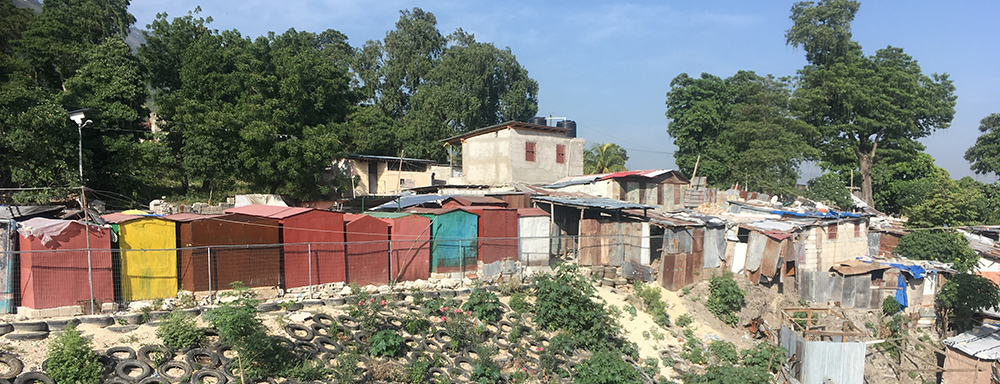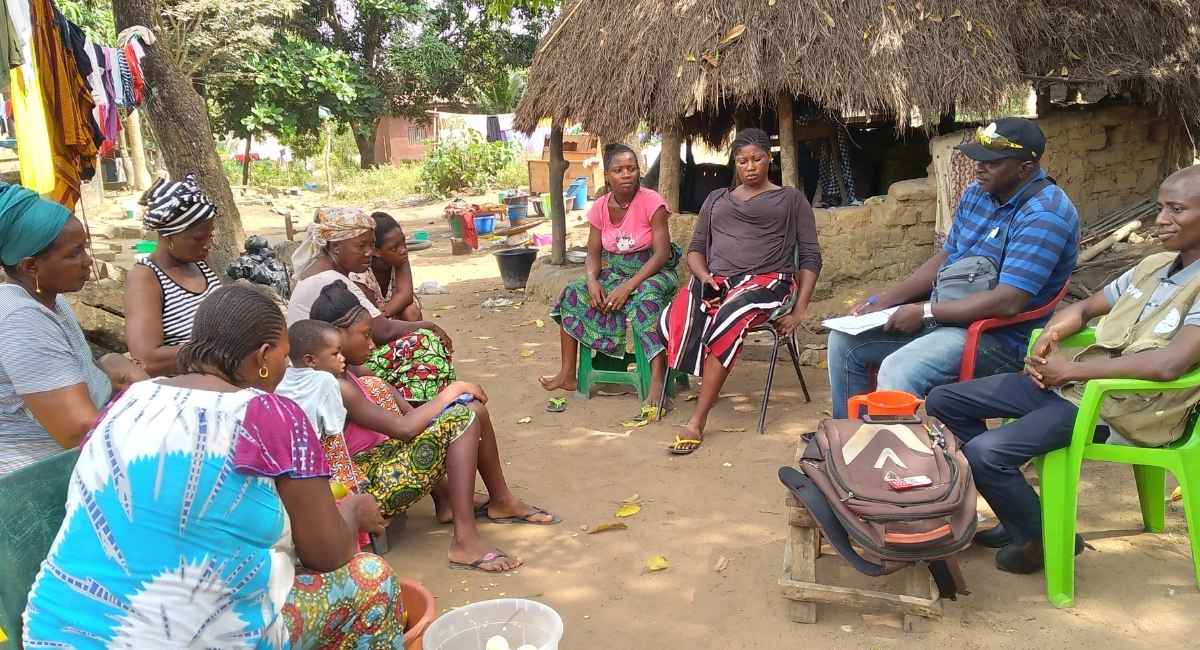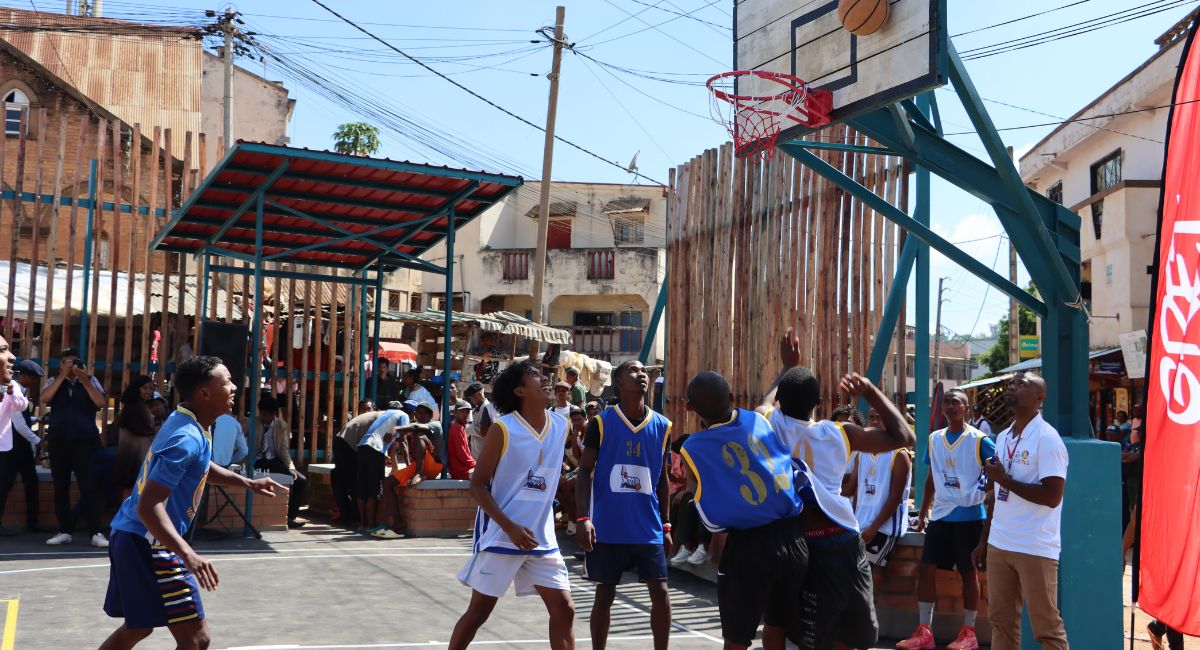The Desprez neighbourhood in Port-au-Prince, in Haiti, which was very badly damaged by the 2010 earthquake, is the focus of a programme of support for reconstruction and development. Initiated in 2014 by GRET and Oxfam, with financial support from the European Union, the project, which is now finished, benefitted from the involvement of residents in the neighbourhood, local authorities and various sectoral stakeholders.
The Desprez neighbourhood extends over an area of 70 hectares, and has a population of 10,000. It is characterised by rough terrain, with slopes of 20 % on average. The living environment and conditions are very precarious: for the most part, constructions are small and poor in quality, and very densely laid out. Pedestrian pathways are often very narrow, in bad condition and difficult to access. The earthquake on 12 January 2010 caused substantial damage in this neighbourhood, and destroyed a significant number of buildings and infrastructures. In response to this crisis situation, the Parad project (Support project for reconstruction and development of Desprez) sought to provide a sustainable response, going beyond humanitarian and/or relief interventions, to support residents to rebuild and improve their living environment.
Combining reconstruction and sustainable development
The project adopted a multisectoral and territorial approach, combining reconstruction with sustainable and preventive development, focusing on three components of intervention:
- Living environment, with work on infrastructures to begin implementing a joint development plan for the neighbourhood.
- Strengthening of local stakeholders’ capacities, on the one hand through support for the economic activities of small companies, small business owners and small shops; and on the other hand, support for community organisations with their capacity to propose and conduct micro-actions for the development or embellishment of their neighbourhood, and to provide basic services to populations;
- Housing conditions of families affected by the earthquake, thanks to technical and financial support and support for the construction sector.
A multisectoral approach to respond to the various challenges
The activities of the project focused on six operational sectors: urban planning; development and safety of roads, ravines and public spaces; strengthening access to urban services; economic development; risk prevention; and lastly, reconstruction of houses. Among the numerous activities carried out and the various results obtained as part of this project, we can mention the following:
- the definition of a development plan at neighbourhood level, laying out project orientations based on a joint diagnosis and technical studies, specifying actions to be conducted and setting objectives for the longer term. This document was drawn up with participation from residents (exploratory walks, informative meetings, consultation and prioritisation workshops, an exhaustive survey of households on buildings, specific sectoral studies, etc.). It was subsequently submitted for validation to an institutional technical committee made up of local and sectoral authorities, made up of the Interministerial Committee on Development of the Territory (in French), the Ministry of Public Works, Transport and Communications, the Ministry of the Interior and Local Authorities, the Public Housing and Buildings Construction Unit, the National Department of Drinking Water and Sanitation (in French) and the Municipality of Port-au-Prince (in French).
- The completion of several structural development operations, in line with the priorities identified in the development plan, working with construction companies, for example the development of a public square, rehabilitation and paving of roads, and making ravines safe.
- The completion of numerous secondary developments (lanes and small squares) by neighbourhood associations via a call for micro-projects. The latter contributed to improving pedestrian circulation and rainwater evacuation in these densely populated areas of precarious housing.
“The Parad project Parad was not implemented from the top down, there were conversations and discussions with residents in the area (…) Before the project, stagnant water was attracting mosquitoes, which caused a lot of illnesses. Walkways were not safe. Sometimes pregnant women would fall, generating risks of miscarriage (…) The project enabled us to improve safety. We now have more space to circulate.” Michaele Louis, former member of the Board of management of the Turgeau communal section.
- Reconstruction or reinforcement of almost one hundred houses enabling real improvement of the housing situation for approximately 400 people.
- Work on organising a neighbourhood interface with a view to consultation with residents and ultimately dialogue with institutions: the Parad project, a neighbourhood unit initially created on a sectoral basis rapidly progressed into a collective of associations. This fragile structure acted alternately as an opponent and a facilitator for the project.
Positive but limited results on improvement of living environment and conditions for residents in the neighbourhood
This project made it possible to obtain substantial financial resources for a spontaneous precarious neighbourhood, whereas neighbourhoods of this type are generally neglected by public urban development policies. The various project actions contributed to a real improvement in the living environment at the heart of the neighbourhood and within the various pockets of precarious housing. The project had a significant direct impact on some families’ living conditions.
However, although the funding was consequential, it was insufficient to respond to all needs expressed or identified in the neighbourhood: response to one out of every six requests for housing, impossibility to conduct certain priority road works due to lack of resources, etc. It would be necessary to unblock complementary funding to consolidate actions initiated as part of the project, which unfortunately will not be possible in the short and medium term, given the reorientation of European Union funding for urban development towards other priorities, with the end of post-catastrophe exception period.
Innovative approaches for more sustainable results
In terms of innovation, the project sought to change constructive practices. As part of interventions involving support for reconstruction/reinforcement of housing, GRET focused on the urban dimension of housing by prioritising nucleated habitat operations. These operations, involving three to six families, facilitated land consolidation, vertical densification and a semi-collective sanitation solution. Five operations for a total of 28 housing units were completed in a neighbourhood where individual constructions on small plots are still the norm. Through the project, residents observed the advantages of a nucleated habitat solution (larger surface area and better access to services), which, in the longer term, could contribute to a replication of this type of operation. “Promoting acceptance of sharing walls with adjoining houses in nucleated habitats necessitated a pedagogical approach and strong involvement of facilitators. But once the first experiment at Lakou Tijak was completed, some families got together themselves to benefit from this new type of housing”, explains Sterenn Le Delliou, Parad project manager.
Lastly, with regards methodology, the implementation of a transversal approach in terms of gender made it possible for women to draw greater benefit from the impacts of operational activities. For example, specific training and support actions on a school work site and the implementation of social clauses in calls for tender facilitated a high level of women’s participation in building projects/project development, traditionally reserved for men (up to 30%).
This article was produced with financial support from the European Union. Its content falls under the sole responsibility of GRET and does not necessarily reflect the opinions of the European Union.






